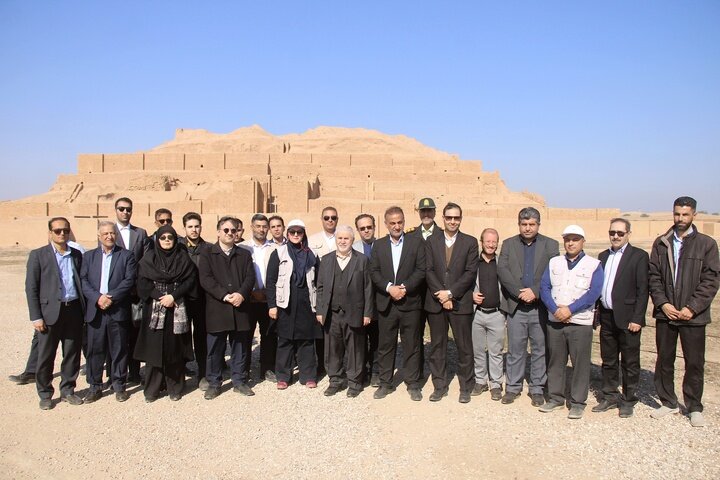Deputy tourism minister visits UNESCO-listed Tchogha Zanbil in Khuzestan

TEHRAN – On Wednesday, Ali Darabi, Deputy Minister of Cultural Heritage and Tourism, visited the UNESCO-listed Tchogha Zanbil, a prehistorical ruined ziggurat in Khuzestan province as part of his official tour of heritage projects in the region.
During his visit, Darabi was briefed on the latest restoration and conservation efforts at the ancient site. “Tchogha Zanbil was the first Iranian monument that was inscribed on the UNESCO World Heritage List. Today, with 28 UNESCO-listed sites, Iran ranks among the world’s top 10 countries in cultural heritage,” he stated.
Describing the ziggurat as a testament to the architectural and urban planning ingenuity of ancient Iranians, Darabi highlighted its significance in illustrating the lifestyle and achievements of early civilizations.
Moreover, Atefeh Rashnoei, Director of the Tchogha Zanbil World Heritage Site, provided insights into the site's historical importance. “This structure dates back to c. 1250 BC, and some experts believe its arches may have inspired later Roman vaulting techniques,” she explained.
Darabi then emphasized the importance of continued preservation efforts, noting that ongoing restoration projects aim to maintain the integrity of the site for future generations.
Tchogha Zanbil, also known as the Ziggurat of Dur-Untash, stands as a testament to the architectural brilliance of its time. It was made a UNESCO site in 1979. Its construction started in c. 1250 BC upon the order of the Elamite king Untash-Napirisha (1275-1240 BC) as the religious center of Elam dedicated to the Elamite divinities Inshushinak and Napirisha.
As mentioned by the UN cultural body, Tchogha Zanbil is the largest ziggurat outside of Mesopotamia and the best preserved of this type of stepped pyramidal monument. Tchogha Zanbil was excavated in six seasons between 1951 and 1961 by Roman Ghirshman, a Russian-born French archeologist who specialized in ancient Iran.
AM
